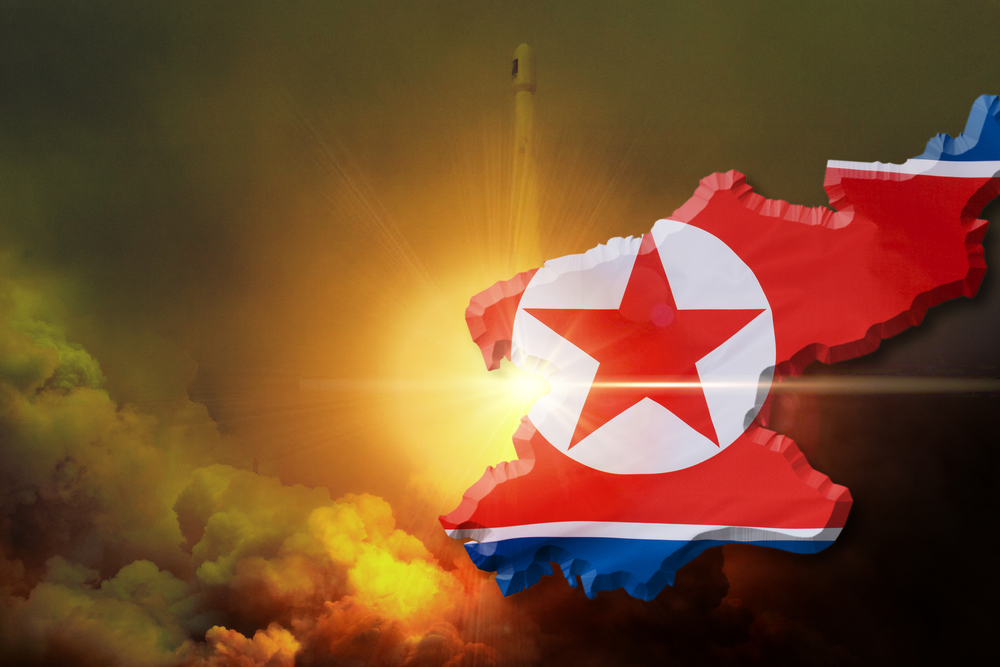
Kim Jong Un unveils a Russian-influenced 5,000-tonne destroyer capable of launching nuclear missiles, potentially funded by North Korean troops sent to Ukraine.
Key Takeaways
- North Korea has tested its first advanced 5,000-tonne Choe Hyon-class destroyer equipped with supersonic and strategic cruise missiles, potentially capable of carrying nuclear warheads.
- Military experts note the destroyer’s design resembles Russian technology, suggesting a deepening military alliance between North Korea and Russia amid the Ukraine conflict.
- Kim Jong Un personally directed the weapon tests and announced plans to acquire a nuclear-powered submarine, signaling accelerated naval nuclear armament.
- Evidence shows North Korea is building a new road bridge to Russia, further cementing their military and economic cooperation against Western interests.
- The vessel represents a significant step toward North Korea’s goal of creating a blue-water navy capable of operating in open oceans with nuclear strike capabilities.
North Korea’s Naval Advancement Aligns with Russian Cooperation
North Korea’s launch of an advanced 5,000-tonne destroyer marks a significant leap in its naval capabilities and raises serious concerns about the regime’s growing military threat. The vessel underwent comprehensive tests over two days, demonstrating its combat readiness with an array of sophisticated weapons systems. These tests, personally overseen by Kim Jong Un, included launches of supersonic missiles, strategic cruise missiles, surface-to-air missiles, and firing of a 127mm naval gun. The combination of advanced technologies showcased on this vessel represents a quantum leap for North Korea’s previously outdated naval forces.
Military experts examining the limited footage of the destroyer have noted striking similarities to Russian naval designs, adding to mounting evidence of technical cooperation between North Korea and Russia. This partnership appears to have intensified following the summit between Kim Jong Un and Vladimir Putin. South Korean intelligence suggests these naval advancements may be part of a quid pro quo arrangement where North Korea receives Russian military technology in exchange for supplying troops and ammunition for Russia’s war in Ukraine – a disturbing alliance between two nuclear-armed nations against Western interests.
Kim’s Nuclear Navy Ambitions Grow Bolder
During the destroyer testing, Kim Jong Un made his nuclear intentions explicitly clear, emphasizing the need for “accelerating the nuclearization of the navy.” This statement aligns with North Korea’s broader strategy of developing tactical nuclear weapons capable of striking American allies in the region. The new destroyer is believed to be equipped with a Hwasan-class cruise missile system that could potentially carry nuclear warheads, dramatically increasing the threat posed to South Korea, Japan, and U.S. forces stationed throughout the Pacific region. North Korea’s push for naval nuclear capabilities represents a dangerous new front in their weapons development program.
“It is important to establish a proactive and aggressive defence system on the premise of powerful attack capability,” said Kim Jong Un, clearly articulating his offensive military posture despite North Korea’s economic struggles.
Even more concerning, Kim announced his next military objective: acquiring a nuclear-powered submarine. This would give North Korea a true nuclear triad – the ability to launch nuclear weapons from land, air, and sea – making their arsenal more resilient to potential preemptive strikes. Such capabilities would fundamentally alter the strategic balance in Northeast Asia, potentially triggering a new arms race and undermining decades of nonproliferation efforts. Meanwhile, the Biden administration continues its ineffectual “strategic patience” approach while North Korea’s threats multiply.
Infrastructure Projects Cement North Korea-Russia Alliance
Beyond naval developments, South Korea’s Unification Ministry has documented land clearing operations near the Tumen River, indicating preparations for a new road bridge connecting North Korea directly to Russia. This infrastructure project, expected to be completed by 2026, follows agreements reached during the Kim-Putin summit. The bridge will facilitate increased trade and military cooperation between the two nations, effectively undermining international sanctions meant to pressure North Korea into abandoning its nuclear program. This collaboration represents a strategic alliance of convenience between two nations seeking to counter American influence.
“There’s a high possibility that North Korea received advanced weapons technologies from Russia in return for dispatching forces to support Moscow in the war in Ukraine,” said South Korean Representative Yoo Yong-won, highlighting the dangerous weapons-for-troops arrangement suspected between the two nations.
This acceleration in North Korea’s naval capabilities comes at a time when American attention is divided between multiple global conflicts and domestic challenges. While the United States maintains significant military superiority, North Korea’s development of nuclear-capable naval vessels represents a growing threat that cannot be dismissed. The regime’s willingness to partner with Russia also demonstrates how America’s adversaries are increasingly coordinating their efforts to challenge the Western-led international order, all while the Biden administration appears unable to formulate an effective response strategy.












